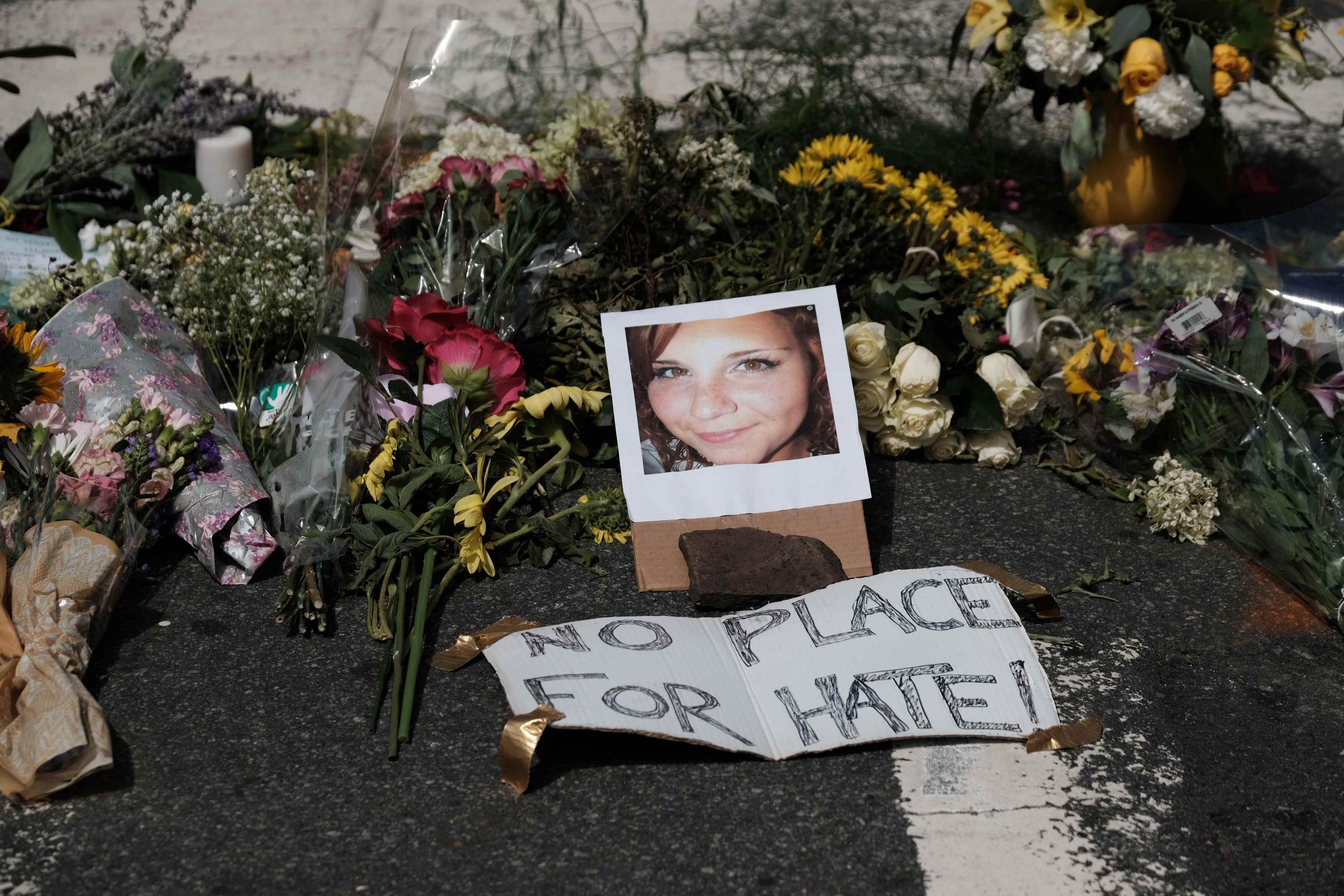Charlottesville driver accused of plowing through counter-protesters ‘idolized’ Hitler, says former teacher
James Alex Fields Jr, the accused driver, travelled to Virginia from his home in Ohio

Your support helps us to tell the story
From reproductive rights to climate change to Big Tech, The Independent is on the ground when the story is developing. Whether it's investigating the financials of Elon Musk's pro-Trump PAC or producing our latest documentary, 'The A Word', which shines a light on the American women fighting for reproductive rights, we know how important it is to parse out the facts from the messaging.
At such a critical moment in US history, we need reporters on the ground. Your donation allows us to keep sending journalists to speak to both sides of the story.
The Independent is trusted by Americans across the entire political spectrum. And unlike many other quality news outlets, we choose not to lock Americans out of our reporting and analysis with paywalls. We believe quality journalism should be available to everyone, paid for by those who can afford it.
Your support makes all the difference.The man accused of driving his car through a crowd of activists in Virginia — killing one and injuring 19 more — idolised Hitler and white supremacy, a former teacher of his says.
A former history teacher of James Alex Fields Jr’s says that, in high school, his former pupil accused of second degree murder sympathised with Nazi views and espoused extremist ideals as a student. Mr Fields is 20-years-old.
“It was obvious that he had this fascination with Nazism and a big idolatry of Adolf Hitler,” Derek Weimer, the teacher, told the Washington Post.
Videos of the attack in Charlottesville show a grey car plowing through a crowd of demonstrators participating in a counter-protest to a gathering of white supremacists there. The car then reverses, quickly, as hit protesters looked on, stunned, while others attempted to hit the vehicle as it fled the scene.
Mr Fields had apparently driven to Charlottesville from his home in Ohio to attend the so-called “Unite the Right” rally, which brought together the self-described alt-right movement that has been recognised as a white nationalist group. The rally had been organised to protest planned removal of a statue of Confederate General Robert E Lee.
The rally quickly saw clashes between counter-protesters and the alt-right demonstrators, and police quickly had to disperse the demonstrations minutes after the scheduled start time at noon Saturday. Just the night before, a torch-lit pre-rally march had descended into violence.
In his first court appearance, via video conference, Mr Fields did not enter a plea in connexion to the crime he has been accused of. He told the court that he could not afford a lawyer. He was also denied bail, and given a return date.
The alt-right movement has gained some national exposure after the unexpected victory of Donald Trump, who many see as sympathetic to the cause. The group is seen as part of a larger backlash against diversity and “identity politics” in the United States that was seen as a larger cultural backlash that propped up Mr Trump’s campaign.
Other hate groups were also represented at the rally, including the more traditional white nationalist groups like the neo-Nazis and the Ku Klux Klan.
Efforts to remove the state of Lee resulted in city council members pointing out that Lee had no tangible connexion to the city, and therefore the existence of the statue on public grounds was just an indirect way to celebrate the Confederacy — the secessionist government that started the Civil War over disagreements with the northern states about whether slavery should exist in the US.
The issue of Confederate monuments in the US — they are predominantly located in the US South, but can be found all over the country — has been a point of contentious debate since at least 2015, when 21-year-old white supremacist Dylann Roof killed nine black people at a historically black church in South Carolina. Pictures of Roof, who wrote in journals that he wanted to spark a race war, holding the Confederate flag later surfaced, leading to the removal of the flag form the state capitol grounds.
The removal of that flag was controversial, and preceded many efforts across the South to remove Confederate symbols from public spaces. A review of Confederate monuments in the US conducted by the Southern Poverty Law Center has found that there are at least 1,503 Confederate place names or symbols in the US.
Join our commenting forum
Join thought-provoking conversations, follow other Independent readers and see their replies
Comments